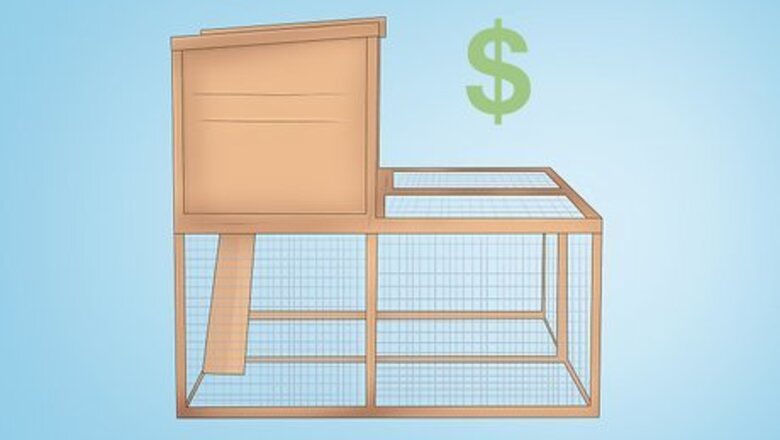
views
Setting Up Home for Quail
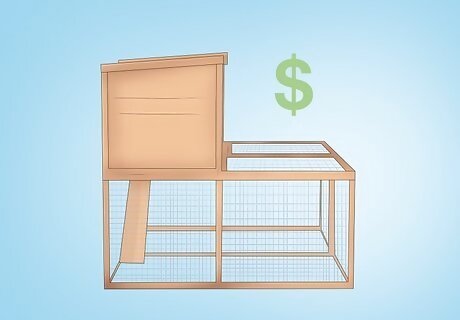
Purchase a suitable home for your quail. Due to their small size, quail can live in most sorts of housing including guinea pig hutches, rodent cages, chicken coops, and aviaries. There’s two ways to acquire a house, you either buy one or build one. It’s important to give quail no less than 1 square foot of floor space. A longer cage allows your quail room to roam but a smaller cage can cause them stress from close confinement. Make sure that the spacing between the wiring is at most 1/2 an inch, as quails can squeeze their head through anything larger. Owing to their tiny feet, they do not do well with wire floor grids, as they can fall and slip through, causing discomfort and possible injury
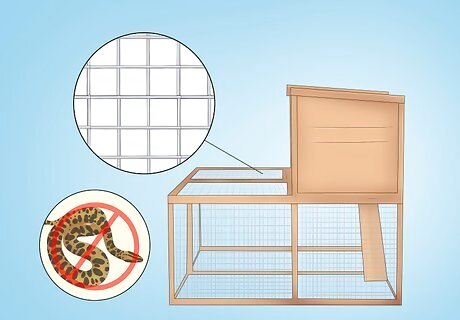
Make sure the housing is the best it can be for your quail. Quail can be kept in any sort of housing but their home does need a few things to make it safe and suitable for your quail. These things include: The home must have easy access so that you can grab the birds when necessary, feed and provide water for the quail every day, and clean the cage with no troubles every week. The quails home should have shelter from the rain, wind, hail, snow and the sun. Keep in mind that although the cage should have shelter from the wind and sun, it still needs plenty of fresh air and a bit of sunlight. If you cannot obtain housing with shelter then you could try covering a water-proof sheet (e.g. tarpaulin) over the housing to keep it safe. The home should be secure and predator proof. Dogs, wild cats, rats, snakes, raccoons and foxes will eventually kill your quail if the housing isn’t predator-proof or secure enough. It’s also possible for small dogs to dig under the housing and get in, birds can peck at the quail from the wiring and raccoons can reach through the wiring and grab the quail.
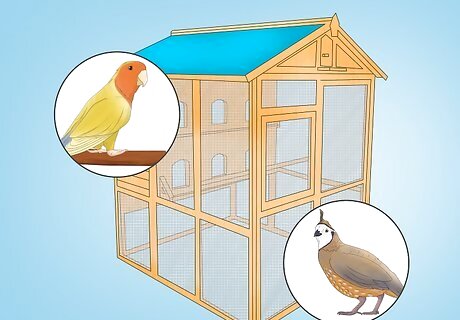
Be aware that you can house your quail with finches, canaries and budgies. Keep in mind that if you are going to do this then it is best to keep the quails and the small birds in a fairly large aviary. Housing them in a simple bird cage can cause stress on both the quail and the small bird. You get advantages and disadvantages with this option. The advantages are that you do not need to spend a lot of money on a home for your quail and the quail will clean up the seed that the birds drop on the floor. The disadvantages are that the quail might attack the other birds or get attacked themselves, there is more mess to clean up in the aviary, and when the quail breed and hatch out chicks, the chicks might get attacked by the other birds in the aviary.
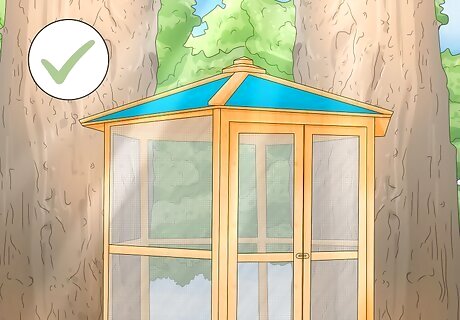
Place the housing in a suitable environment. Quail need a calm, warm yet cool, quiet and undisturbed place to stay to be happy. They should also be housed away from predators including pets. A suitable place to house quail is under a tree during summer or in a garage/shed during winter.
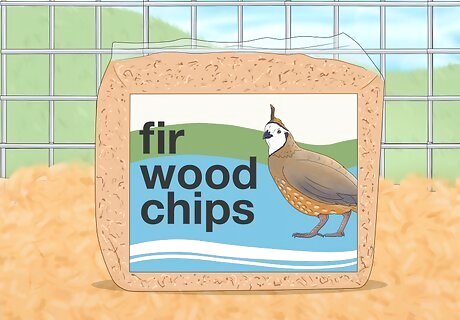
Add bedding to the home. For their habitat bedding you can use pine shavings, fir wood chips, sand, newspaper pellets, grass pellets, Timothy hay or non-skid kitchen draw liners. It is highly recommended that you give the quails some straw/hay to make their nests with. This will encourage them to start laying eggs and they may even want to have some chicks.
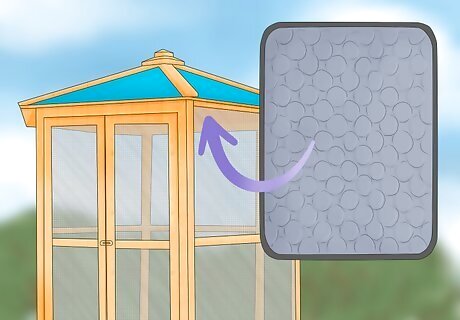
Add padding to the top of the quail's cage (optional). You may think that quails can't fly, but when frightened, they can fly straight up to the roof. So for their cage, make sure to add padding to the top to stop the quails from damaging their head if they do fly up quickly.
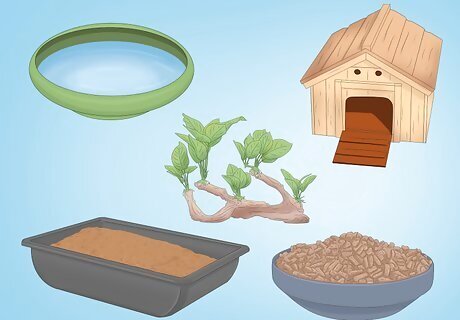
Add a few other items for your quail. Quail need more than just bedding to keep them happy. Some items they need are: Water container. This shouldn't be too big or deep as quail need to have easy access to it and not be in danger of drowning. Feeder. The quail should be able to get to the feeder easily as well as the water container. Hiding spots. You can purchase a couple of large hamster huts and place them in the quail’s cage. Quail love a place to retreat to when they feel frightened or think they are in danger. Sand tub. Quail love dust bathing on a daily basis, the sand also prevents annoying parasites such as mites. Because quail make a mess when they dust bathe it is best to keep the sand tub away from the water container. Small plants. If your quails live on dirt or grass, growing or potting a couple of plants in the housing will make your quails very happy! Remember, quails are curious and love different types of plants in their habitat, just make sure the plants aren't toxic to them.
Choosing Your Quail
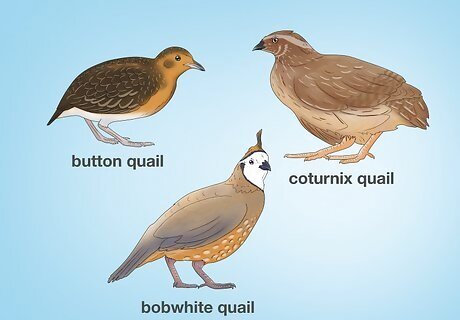
Decide which quail breed you wish to care for. Quail breeds are all different and generally chosen depending on their purpose (e.g. for meat, eggs or breeding). You should do some proper researching on which breed is best for you and your lifestyle. Some popular breeds are: The coturnix quail. These are the most popular owned quail and are chosen because they are thought to be the best breed for beginners, they are easy to take care of, they lay good eggs and they are great quails for raising for meat. The bobwhite quail. These are another recommended quail breed which are normally kept for breeding and meat. The male’s heads tend to be the colour white whilst the female’s heads are the colour ginger which makes bobwhites easy to sex. The button quail. These quail aren't usually kept for meat or eggs due to their small size. The advantages of keeping button quail are that they are great breeders, some types have bright and beautiful colours and they are fun to keep as pets. Button quail are also known to be kept at the bottom of aviaries to clean up seeds that other birds drop down.
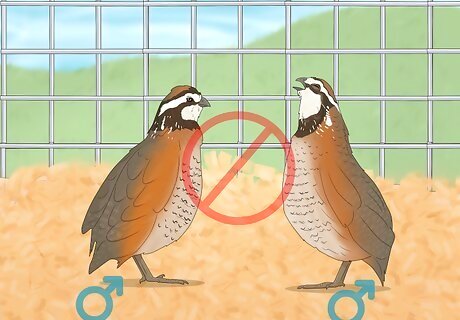
Know how to house quail. Before you purchase quail you need to know the basics of housing quail: Males cannot be housed together; otherwise they will start to fight. It is possible to house them together as long as they have a large amount of space and plenty of hiding spots to retreat to when attacked, but if you cannot provide this for your quail then it’s best not to try to house males together. Do not house males with no females. This can sometimes cause stress to the males and they will also call a lot more than usual. You must house at least two quails together. The reason for this is because they are social birds that will get lonely even if you visit or play with them every day. If breeding quail, you need at least 1 male with every 2-5 females to ensure that the eggs get fertilized.
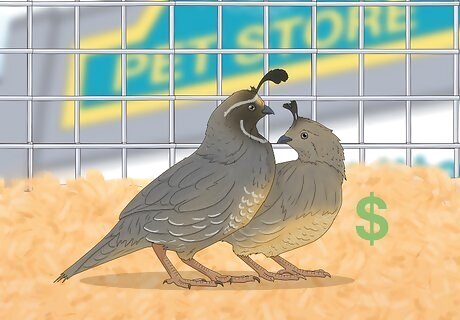
Purchase a healthy quail pair. You can purchase quail from any local breeders, online and possibly a nearby pet shop. Also, before you buy the quail, make sure the breeder is caring for them properly. The quail should be fed a high quality feed, their water and cage should be clean, and they should have plenty of space in their home.
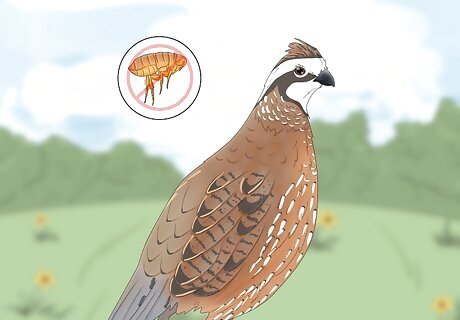
Make sure the quail are healthy. The last thing you want to do is end up spending lots of money on a pair of ill quails even if you think you are ‘saving’ them. Some tips on which quail is healthy and which quail is not can be seen below: They shouldn't be huddled up in the corner. The quail is either cold or seriously ill. They shouldn't be panting. This means that the quail is too hot or very thirsty and probably isn't being cared for properly. Their eyes should be clear. Bad eyes are droopy and cloudy. They shouldn't have featherless bodies or backs. If it is a lot of loss in feathers this may indicate stress in the quail. The cage shouldn't be dirty. This includes the water, the only reason for the cage being dirty is because the current day is the day the cage gets cleaned and it hasn’t been cleaned just yet. The quail shouldn't be injured or have blood on them at all! Never, ever choose a quail with injuries or any other quail that is housed with the injured quail. The only good excuse for a breeder to have an injured quail is because they were given the quail and are trying to raise it back to health. They shouldn't have mites on them. If the quail do have mites it means that their cage isn't cleaned out properly. Mites are seen as little black creatures around the body and head of the quail. They shouldn't be sleeping or at least appear to be sleepy. The quail should be awake and lively unless it is night time or very dark in the cage. They should be alert and cautious. Quail should be frightened of sudden movements yet quite curious. But if the quail is tame it probably will not be frightened.
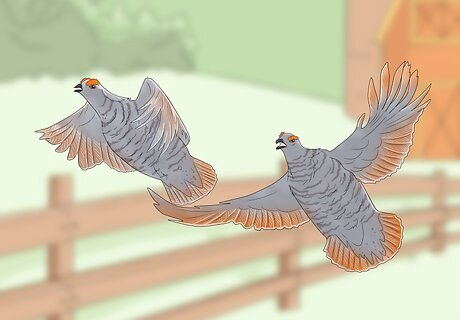
Be aware that some appearances/reactions of quail are natural. Many people think that the quail looks ill or not cared for when they are perfectly fine, some examples include: Bald heads. This is different to bare backs or featherless bodies as bald heads do not indicate stress but mating. Bald heads are mostly common with females during the mating season which is during spring and summer. Quail chasing each other. These quail should be males and it is normal for them to chase each over to show dominance, do not think that it is due to a lack of space. However, if they have a wound do not purchase the quail as this is usually very bad unless they are healing. The quail are eating so much food! Most breeders give quail a certain feeding time and it is normal for quail to be inside the feeding containers and getting dirty with the feed. Remember, quail do not over-eat.
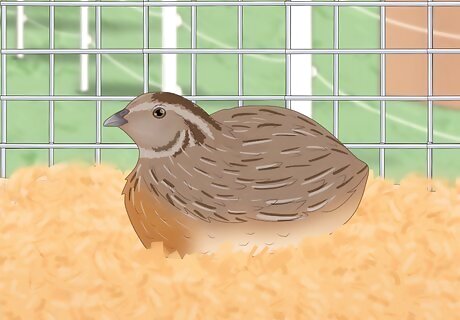
Leave your quail undisturbed for a week. Before you interact with the quail you must first let them settle in to their new surroundings. The quail might be seen running up and down and along their cage for the first week and the females will not lay eggs until they are settled in which might take a couple of weeks or more.
Feeding Quail

Prepare the quail's food. For food you have a large range of choice. Suitable food includes: Game bird crumbles, finch/canary mix, turkey starter and some gravel or grit. You can also give them a wide range of treats which you can see in the steps below. A common choice is to supply the feed in a feeder but if your quail live on dirt/grass you can try scattering the feed on the ground so that your quail can forage for the feed, they will love this.
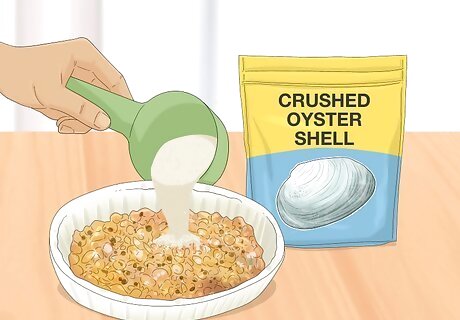
Give your female quails crushed oyster shells or crushed egg shells if you want them to lay hard and healthy eggs. You could also put them on a layer pellets diet instead of their ordinary diet to ensure that you get the best eggs out of them.
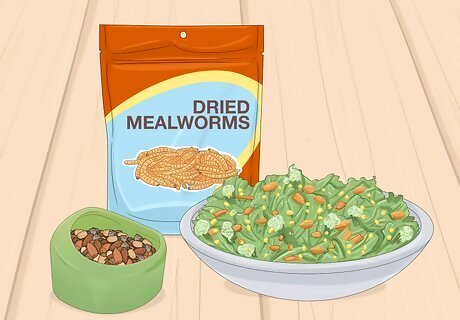
Give your quails a limited amount of treats. You can feed your quail many types of food including fruits, vegetables, seeds, small bugs, greenery and table scraps. Quail can even eat meat if you want them to. Quail are quite fussy when it comes to treats. But don’t worry, they’ll eat what they like and leave what they dislike so you will soon get to know what to feed them. Remember to dispose of foods that the quail do not eat instead of leaving them to waste away in the quails home.
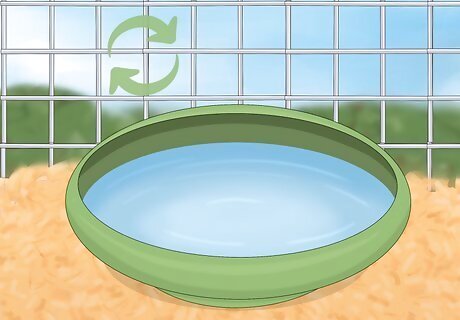
Provide your quails with a constant supply of fresh water. Make sure the water container isn't too deep or big for the quail and that it is in an easy to get to place. You should clean the container at least once a week to prevent a build-up of bacteria.
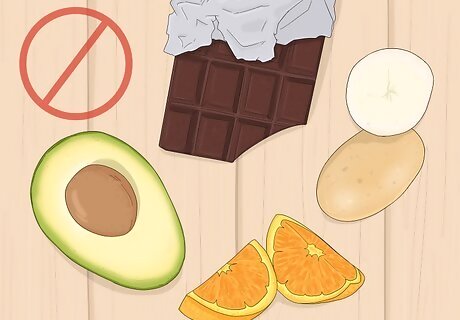
Know what types of food you should not feed your quail. Quail should not eat avocado, caffeine, alcohol, chocolate, salty or sugary treats, uncooked potato, tomato leaves and stems, parsley, citrus fruits and grape seeds as these all are toxic to quail. Some types of plants are toxic to quail as well, so be aware of what plants you put in their habitat. Do not worry too much on what not to feed your quail as they will avoid toxic foods unless they are at the point of starving hungry.
Caring for Quail Daily
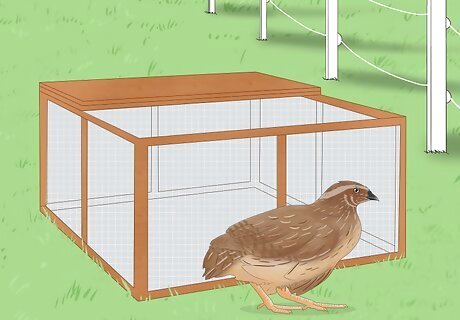
Consider moving the quail to an outdoor cage at least once a week. Quail love new things and they are very curious! They’ll nibble at the grass, dust-bathe in the dirt, eat any small bugs they find, and peck about in ground. The sun is also good for laying hens! If you notice the female quail is not laying eggs, it may be because of her diet or a lack of sunlight, so it's a good idea to put the cage outside for a bit. Also, if you have an outside cage, be on the lookout for such birds as ravens and crows. These birds may view the quail as prey and peck their heads. If you have these birds in the area, it's recommended that you cover the cage with a tarpaulin or something alike when you're not watching them.
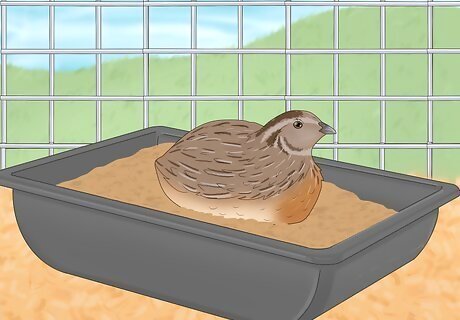
Allow for dust bathing. Quail love to dust bathe daily! Dust bathing also prevents parasites in quail. To get them to dust bathe all you need to do is provide them with a shallow but wide tub of dry sand. They will soon start to dust bathe throughout the day.
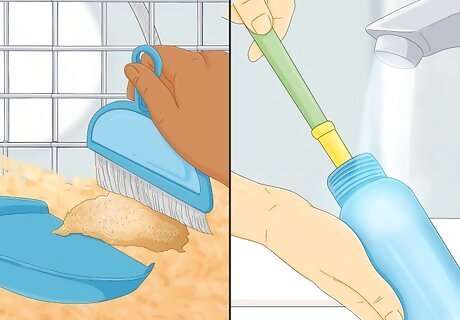
Clean the quails cage every 1 or 2 weeks. Cleaning the quails cage prevents diseases, bacteria, and mites and isn't a big task. You should dispose of all bedding, hose the cage down, rinse the feeders and water container, replace the tub with fresh sand and refill the feeder and water container with fresh food and water. Since quail waste is high in ammonia you must clean the bedding at least once a week to prevent diseases. Just chuck the bedding in a bin or chuck it in your compost.
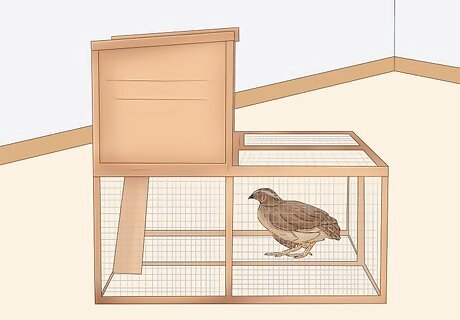
Be sure that the quails cage (or room) is dark at night. Quail need plenty of sleep to stay healthy, happy and overall fun birds! Don’t leave any lights on or at least move the quail to a dark room so that they can sleep properly. Quail can only have up to 15 hours of light per day, otherwise they will not be able to sleep.
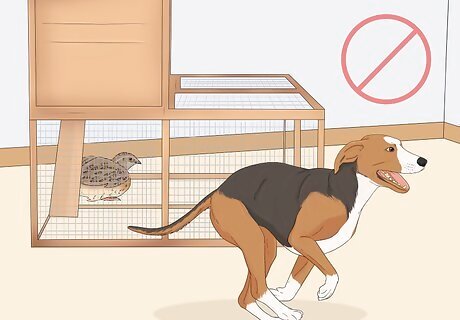
Keep noisy or dangerous pets out of the same room as the quail. There is a possible chance that a dog or cat will try to kill the quail and if you have a noisy pet in the room they will disturb the quail and cause stress.
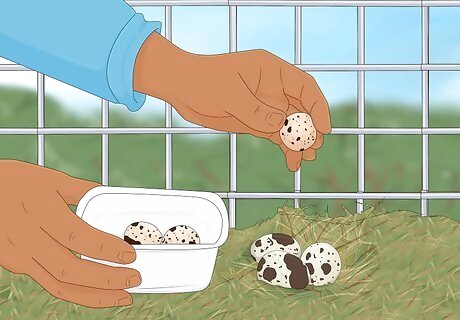
Collect eggs daily. You should collect the eggs once every day to ensure that they are fresh, especially during a hot day. You can put the eggs in an egg carton and leave them on the side or put them in the fridge to stay fresh for a longer period of time. Your female quail will lay about one egg every day so you should get 5-6 eggs every week.
Taking Care of Health and Other Needs
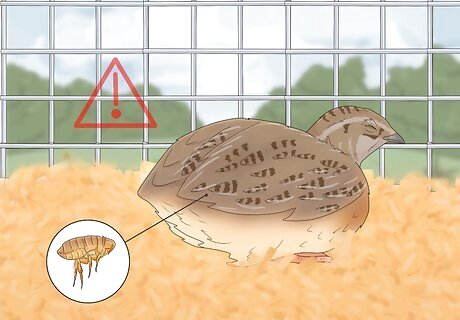
Keep an eye on your quail's health. If your quail seems to be acting a bit unusual or isn't eating lately then it’s probably because the quail is unwell. Although you can take your quail to a veterinarian, you can also fix some small problems yourself. Some problems that may occur are: Your quail is huddled up in the corner of the cage. This is either because the quail is ill or is cold. If the quail is ill you should take it to a veterinarian. If the quail is cold then take it out of the cage and place it in a warm box or something alike. The room should be inside and it should also be very warm. Provide a little bit of food and water in the quails box and wait until the quail is quite lively until you return it to its cage. You should also observe the quail for a few days after it returns to its cage. Your quail has mites. All the quail that live in the enclosure should be taken out and put in a suitable sized box together. After all the quail are out of the enclosure, clean the enclosure thoroughly. Treat the quails by either giving them a good dust-bath, buying some mite powder or any other safe method that gets rid of quail mites. Your quail is injured. This isn't some sort of illness but it is just as serious. You should remove the quail that is injured as soon as possible and keep it separated in its own enclosure until it is fully healed. If you are going to put the quail back in its flock after it has healed, observe the quail for a few days to make sure it gets along with the others. Your quail is too hot. This can easily be treated by moving your quail to a cooler room, providing the quail with shade or taking the heat source away.
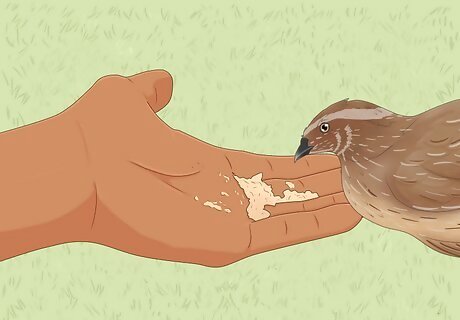
Consider taming your quail. Although taming fully-grown quail is hard, it can be done. Taming quail is handy if you ever need to grab them when necessary, take them to a veterinarian or play with them for a little while. To tame your quail you have to offer them food from your hands, visit them often, be very gentle to them, etc.
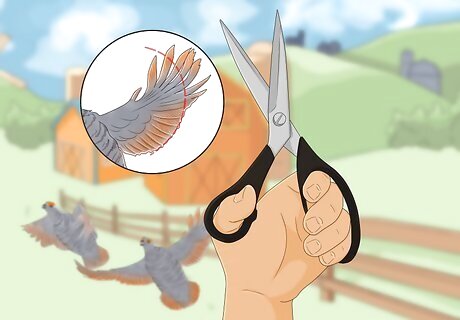
Consider clipping your quails wings. Quail can fly very high when frightened, so if your quail manages to escape it’s handy to clip the quail’s wings so that it cannot fly away from you.
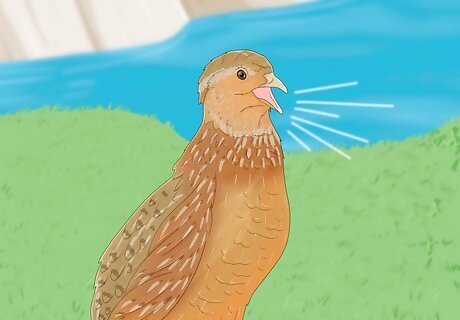
Determine the gender of your quail. If you don't know the gender yet, here are some helpful ways to work this out: Vent sexing is the most accurate way to know the gender of your quail. The male should have a bump and some white foam coming out whilst females will not. Male quails usually have brighter feathers around their neck, head and back and are more aggressive than females. You can also tell the gender by looking at the breast. Females sometimes have a loss of feathers due to mating and aren't as colourful as the male quail. Males will crow now and then. For coturnix quail this is obvious but button females might also call, usually for chicks.
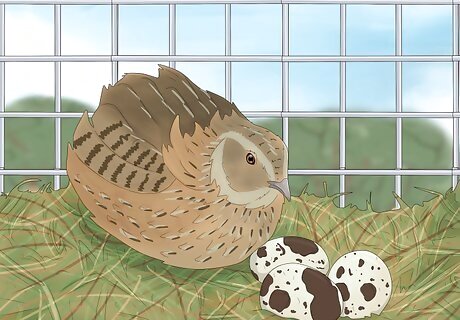
Breed your quail if desired. When breeding your quails do not disturb them or take any eggs out of their cage. They'll need to make a clutch of eggs before any of the male or female quail lays on them and it takes up to about 21 days for the eggs to hatch.



















Comments
0 comment